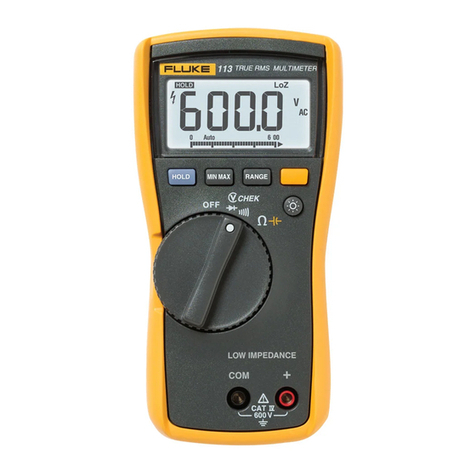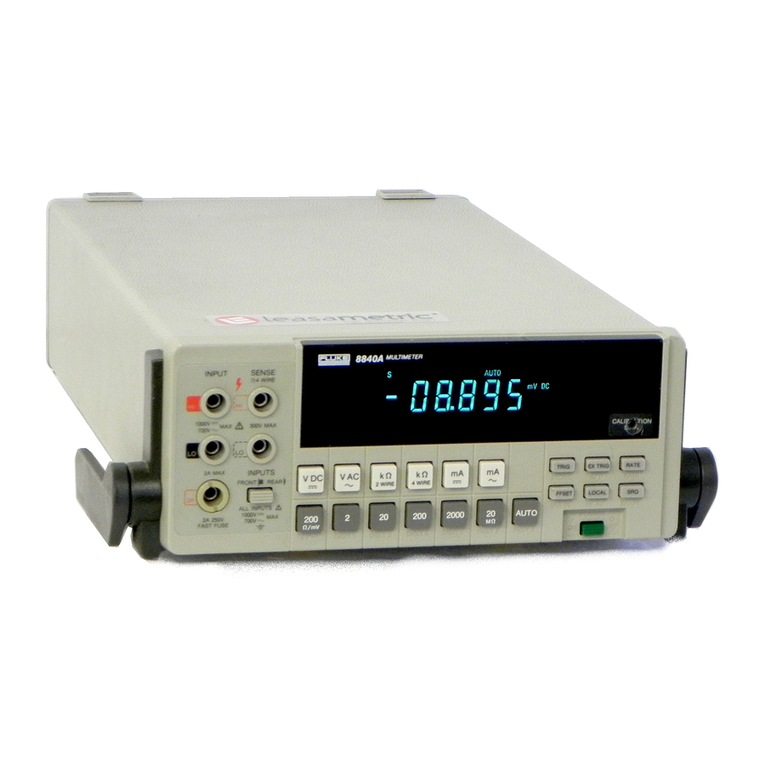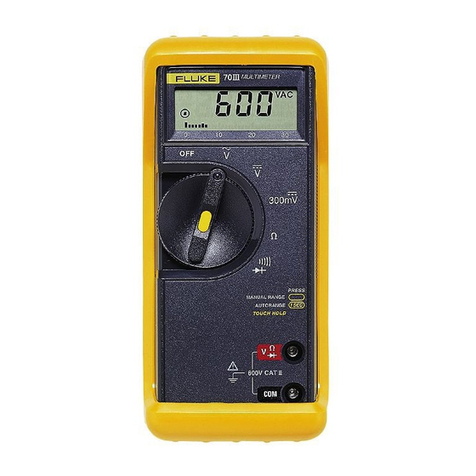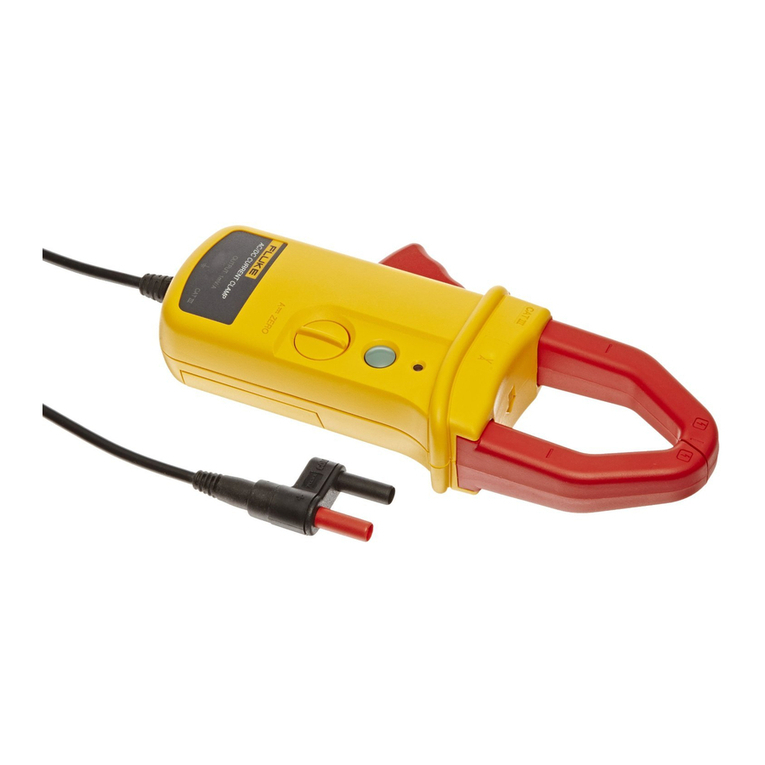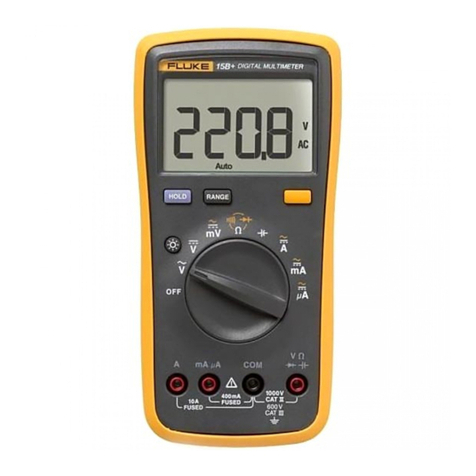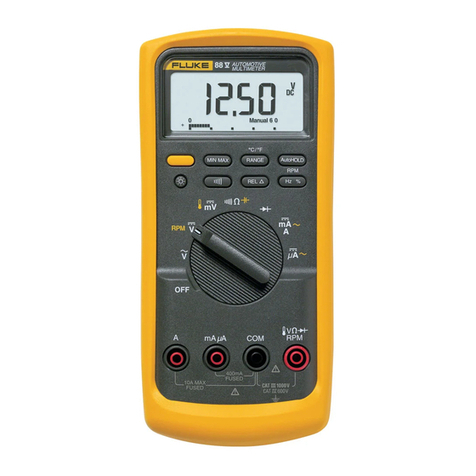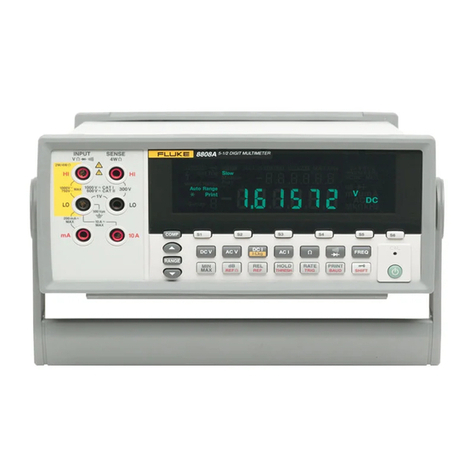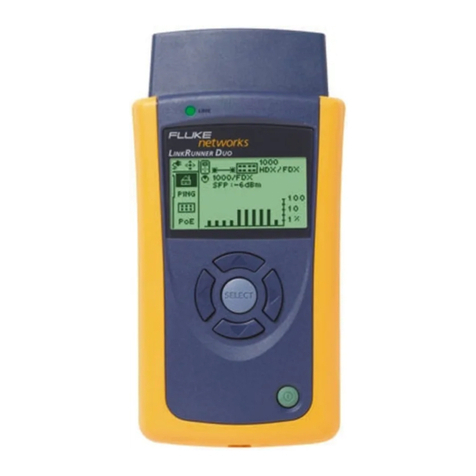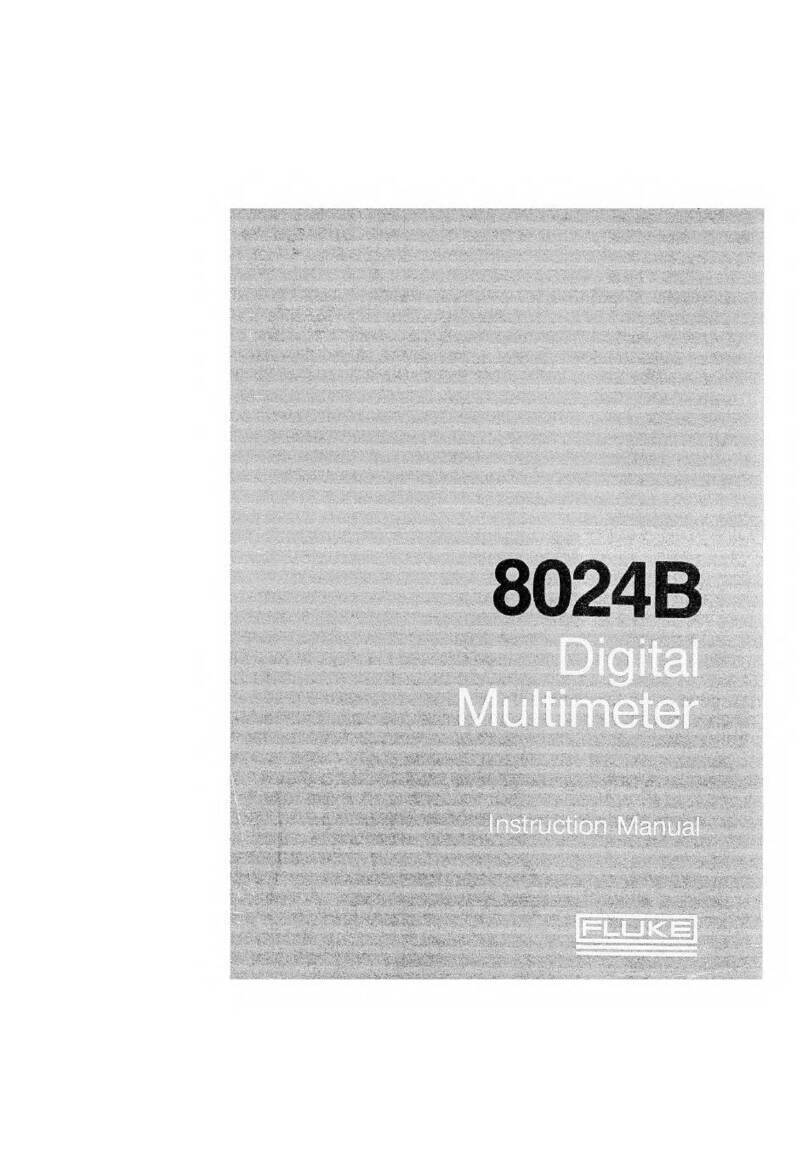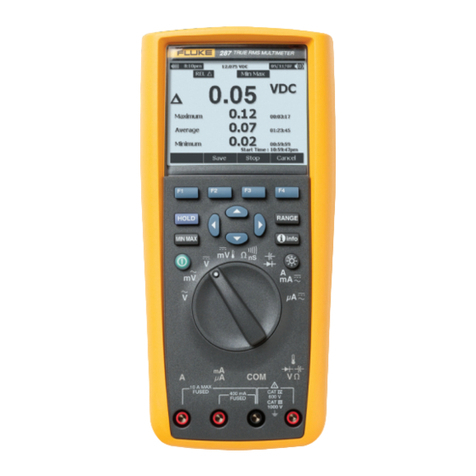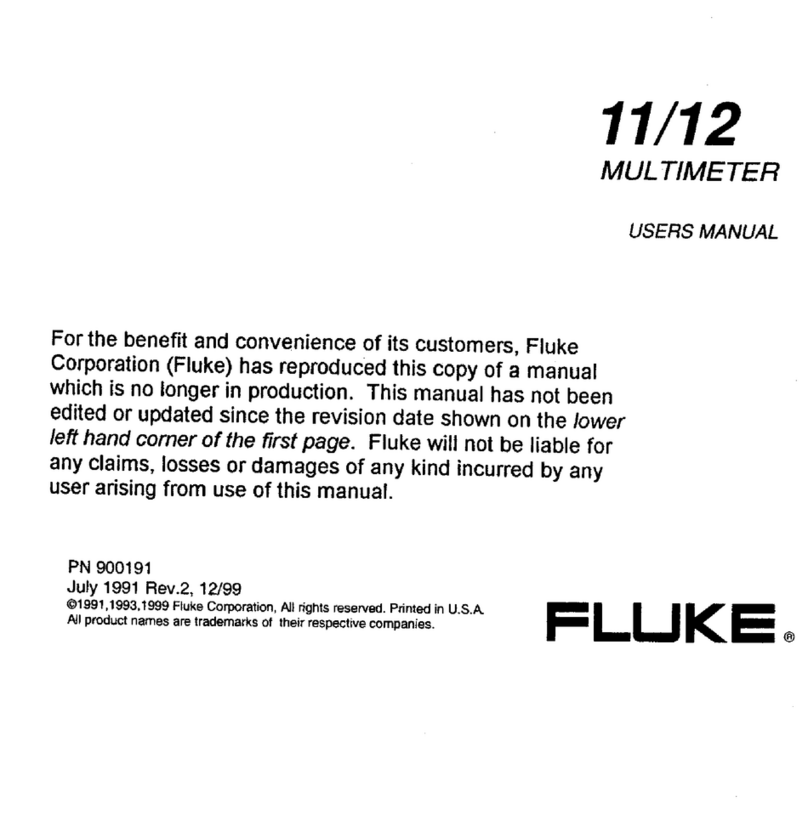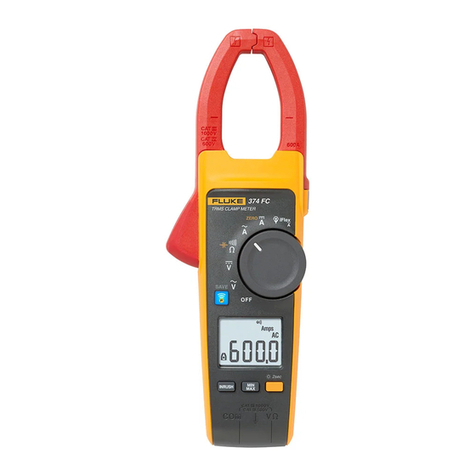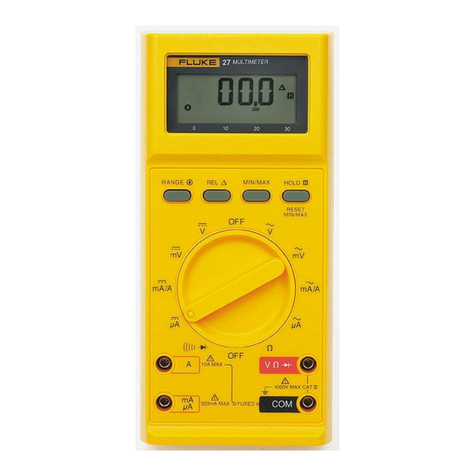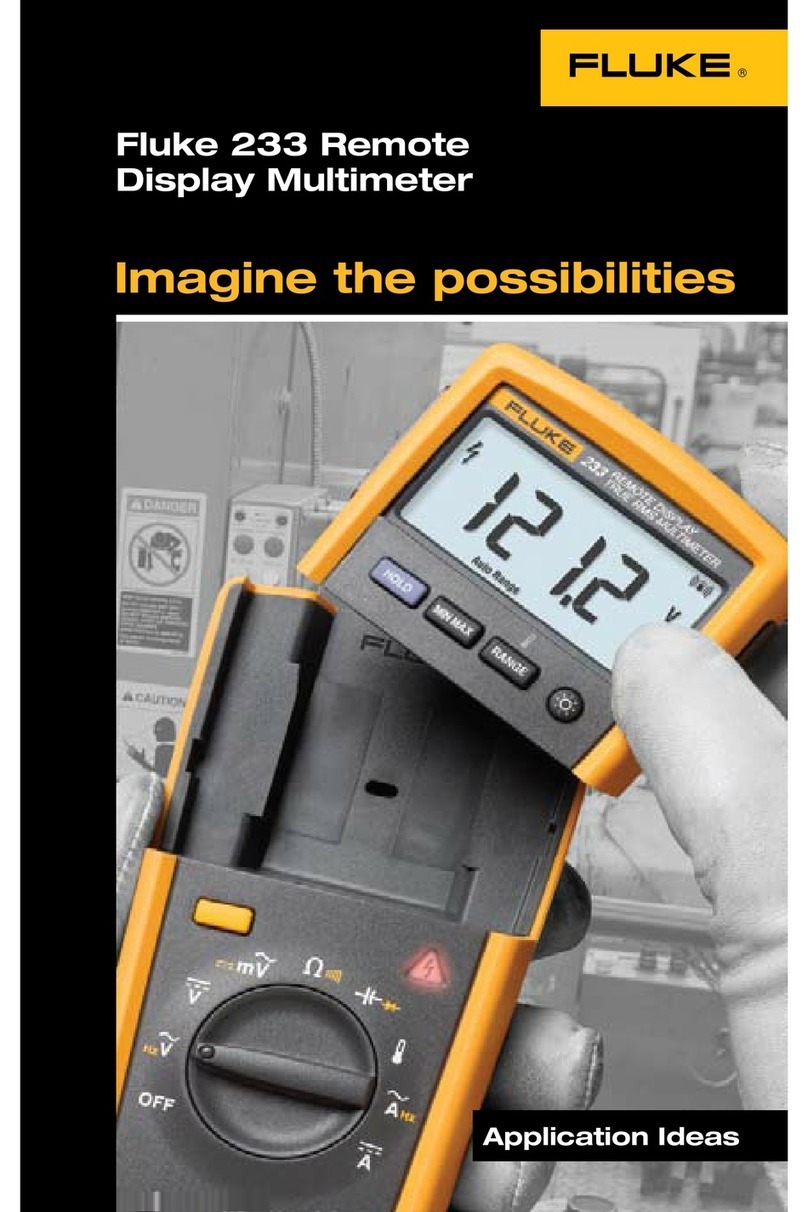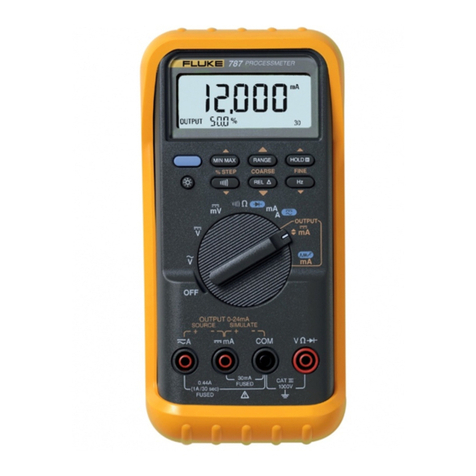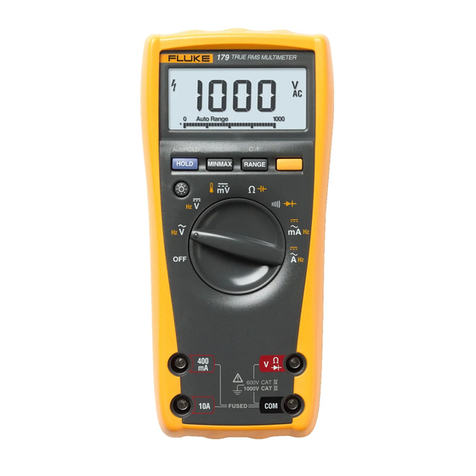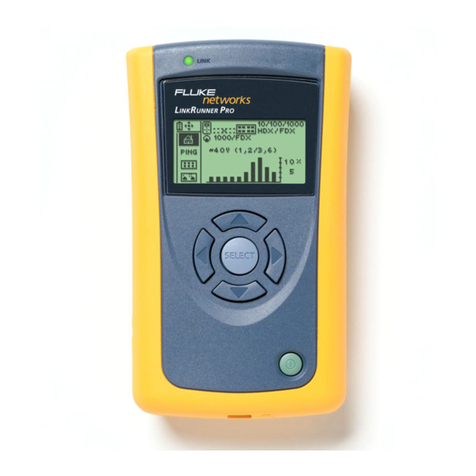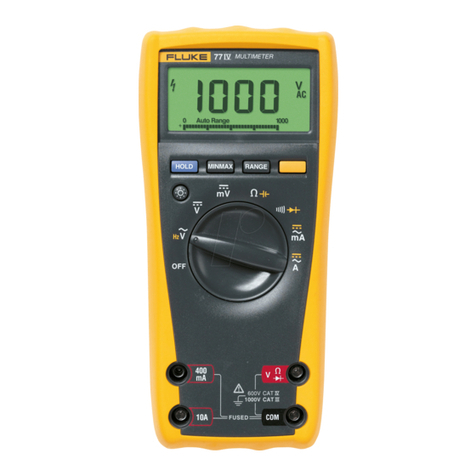
MULTIMETER SAFETY
The Fluke 10, 11, 12 Multimeters have been designed and tested according to IEC
Publication 348, Safety Requirements for Electronic Measuring Apparatus. This manual
contains information and warnings which must be followed to ensure safe operation and
retain the meter in safe condition. Use of this equipment in a manner not specified herein
may impair the protection provided by the equipment.
These mutimeters comply with part 15 of the FCC Rules. Operation is subject to the
following two conditions: (1) these multimeters may not cause harmful interference, and
(2) these multimeters must accept any interference received, including interference that
may cause undesired operation.
Some common international electrical symbols used in this manual are shown below.
BAC - ALTERNATING
CURRENT YDANGEROUS
VOLTAGE
FDC - DIRECT
CURRENT JEARTH GROUND
DEITHER AC OR DC
CURRENT WSEE EXPLANATION
IN MANUAL
IFUSE TDOUBLE INSULATION
FOR PROTECTION
AGAINST ELECTRIC
SHOCK
Before using the meter, read the following safety information carefully. In this manual,
"WARNING," is reserved for conditions and actions that pose hazard(s) to the user;
"CAUTION," is reserved for conditions and actions that may damage your meter.
•Avoid working alone
•Follow all safety procedures for equipment being tested.
•Inspect the test leads for damaged insulation or exposed metal. Check test lead
continuity. Damaged leads should be replaced.
•Be sure the meter is in good operating condition.
•Select the proper function for your measurement.
•To avoid electrical shock, use caution when working above 60V dc or 30V ac RMS.
•Disconnect the live test lead before disconnecting the common test lead.
•Disconnect the power and discharge high-voltage capacitors before testing in Ωand
LR.
•When making a current measurement, turn the circuit power off before connecting
the meter in the circuit.
•Check meter fuses before measuring transformer secondary or motor winding
current. An open fuse may allow high voltage build-up, which is potentially
hazardous.
•Use clamp-on probes when measuring circuits exceeding 10 amps.
•When servicing the meter, use only the replacement parts specified.
•Do not allow meter to be used if it is damaged or if its safety is impaired.






